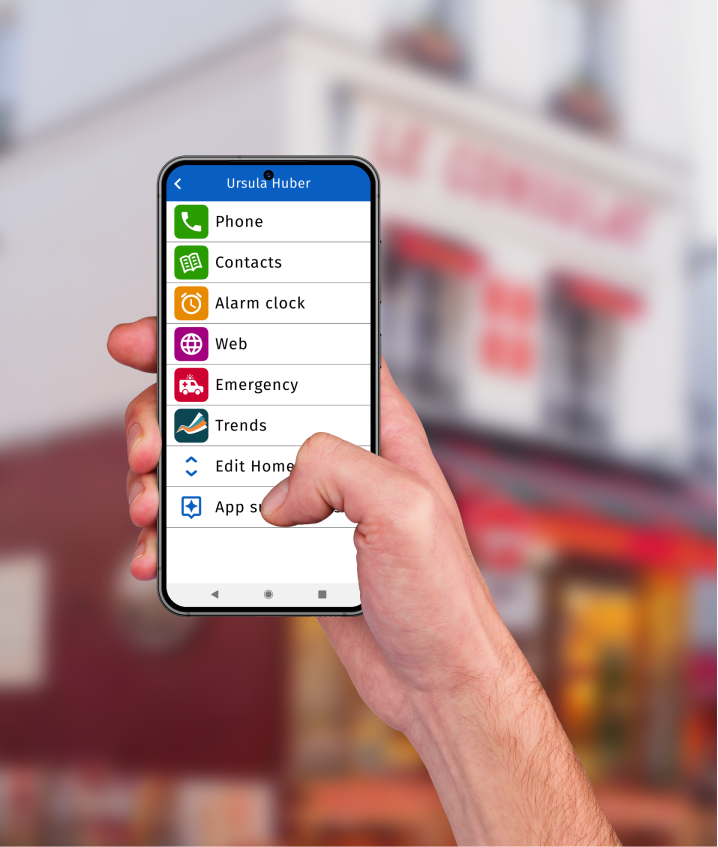A Guide to Managing Daily Rutine on Your Smartphone
Smartphones have become indispensable tools in our daily lives, offering a wealth of features that can streamline and enhance our routines. If you're a senior looking to make the most of your smartphone to manage your daily tasks and activities, you've come to the right place. In this guide, we'll walk you through the steps to harness the power of your device for a smoother and more organized daily routine.

Step 1: Organize Your Home Screen
Start by organizing your smartphone's home screen for easy access to essential apps and functions. Consider creating folders to group similar apps together, such as communication apps (like messaging and email), productivity apps (like calendars and to-do lists), and entertainment apps (like games and news).
Step 2: Set Up a Digital Calendar
A digital calendar is a fantastic tool for keeping track of appointments, birthdays, and important events. Use your smartphone's built-in calendar app or explore third-party options like Google Calendar or Apple Calendar. Enter your appointments and set reminders to receive notifications in advance.
Step 3: Create To-Do Lists
To-do list apps are incredibly handy for managing tasks and chores. Create lists for daily, weekly, or monthly tasks, and check them off as you complete them. Many to-do list apps allow you to set priorities and deadlines.
Step 4: Stay Connected with Loved Ones
Communication is a vital part of daily life. Make use of your smartphone's messaging apps to stay in touch with family and friends. You can send text messages, make voice calls, or even engage in video calls to maintain strong connections.
Step 5: Explore Health and Wellness Apps
Health and wellness apps can help you maintain a healthy lifestyle. Consider using apps to track your daily steps, monitor your heart rate, or set reminders for medication. Some apps can also guide you through simple exercises and relaxation techniques.
Step 6: Manage Your Finances
Banking apps allow you to check your account balances, pay bills, and even transfer funds securely. Set up your bank's mobile app and explore its features for managing your finances conveniently.
Step 7: Access News and Information
Stay informed by downloading news apps that provide the latest updates on topics that interest you. You can customize your news feed to receive stories on current events, health, technology, or any other subject.
Step 8: Entertainment on the Go
Smartphones are excellent sources of entertainment. You can listen to music, audiobooks, or podcasts, and watch videos or play games during your free time. Install entertainment apps to cater to your preferences.
Step 9: Use Voice Commands
Many smartphones come equipped with voice assistants like Siri (Apple), Google Assistant (Android), or Alexa (Amazon). Use voice commands to perform tasks, such as setting alarms, sending messages, or asking for information, without having to type or navigate menus.
Step 10: Regularly Update Your Apps
Keeping your apps up to date ensures you have access to the latest features and security enhancements. Most smartphones allow you to set up automatic updates, but you can also manually update your apps through your device's app store.
Step 11: Explore Accessibility Settings
Smartphones offer various accessibility features that can enhance your user experience. Explore settings like font size adjustment, screen magnification, voice commands, and screen readers to tailor your device to your specific needs.
Step 12: Seek Help When Needed
If you ever encounter challenges or have questions about using your smartphone, don't hesitate to seek help. Family members, friends, or local community centers can provide support and guidance.
By following these steps and gradually incorporating your smartphone into your daily routine, you'll discover newfound convenience and efficiency in managing tasks and staying connected with loved ones. Embrace the digital age with confidence, and let your smartphone be a valuable companion in simplifying your life.
Calming Strategies: How to Comfort an Elderly Person in a Dangerous Situation
As caregivers, family members, or concerned individuals, it's essential to know how to calm down an elderly person when they find themselves in a potentially dangerous situation. Seniors may experience fear or anxiety more intensely, making it crucial to provide reassurance and support. In this blog post, we'll explore effective strategies to help calm an elderly person in such situations.

- Maintain a Calm Demeanor
When an elderly person is facing a dangerous situation, it's essential to remain calm yourself. Your composure can have a significant impact on their emotional state. Speak in a soothing and reassuring tone, and use gentle gestures to convey your support.
- Assess the Situation
Before taking any action, assess the situation carefully. Determine the nature and severity of the danger. Is it a physical threat, a medical emergency, or a safety concern at home? Understanding the situation will guide your response.
- Prioritize Safety
If the danger is immediate, prioritize safety above all else. Remove the elderly person from harm's way if possible. Ensure they are in a secure location and away from any potential threats. If it's a medical emergency, call for professional help immediately.
- Listen Attentively
Sometimes, all an elderly person needs is someone to listen to their concerns. Give them your full attention and validate their feelings. Encourage them to share their fears and anxieties, and let them know you are there to support them.
- Offer Reassurance
Reassurance can go a long way in calming their fears. Remind them that you are with them and will do everything in your power to keep them safe. Offer words of comfort and empathy, such as "I'm here for you" or "You're not alone."
- Provide Distraction
In less severe situations, distraction can be an effective calming strategy. Engage the elderly person in a pleasant conversation or suggest an enjoyable activity to redirect their focus away from the danger.
- Use Deep Breathing Techniques
Deep breathing exercises can help reduce anxiety. Encourage the elderly person to take slow, deep breaths. Inhale deeply through the nose, hold for a few seconds, and exhale slowly through the mouth. Repeat this process several times to help them relax.
- Contact Professionals
If the situation involves a medical emergency, contacting healthcare professionals or emergency services is crucial. Ensure that you have essential information, such as the person's medical history and any medications they are taking, readily available for the responders.
- Create a Safe Environment
After the immediate danger has passed, take steps to create a safe and secure environment for the elderly person. Address any safety concerns in the home, such as removing tripping hazards or installing grab bars in the bathroom.
- Offer Supportive Resources
Connect the elderly person with supportive resources, such as counseling or support groups, if they continue to experience anxiety or fear related to the dangerous situation. Professional help can provide valuable coping strategies.
Conclusion
Caring for an elderly person in a dangerous situation requires patience, empathy, and a calm approach. By maintaining a supportive presence, addressing their immediate safety, and providing emotional reassurance, you can help calm their fears and guide them through challenging moments. Remember that your presence and care can make a significant difference in their well-being and sense of security.
